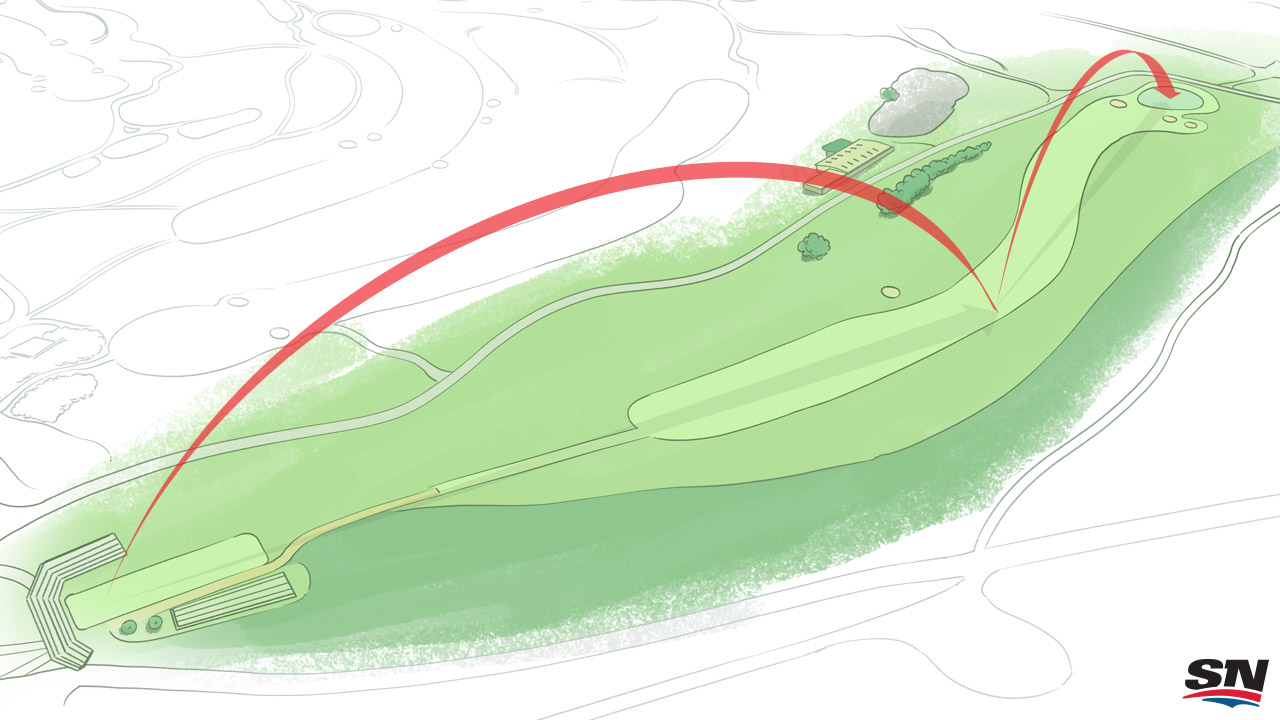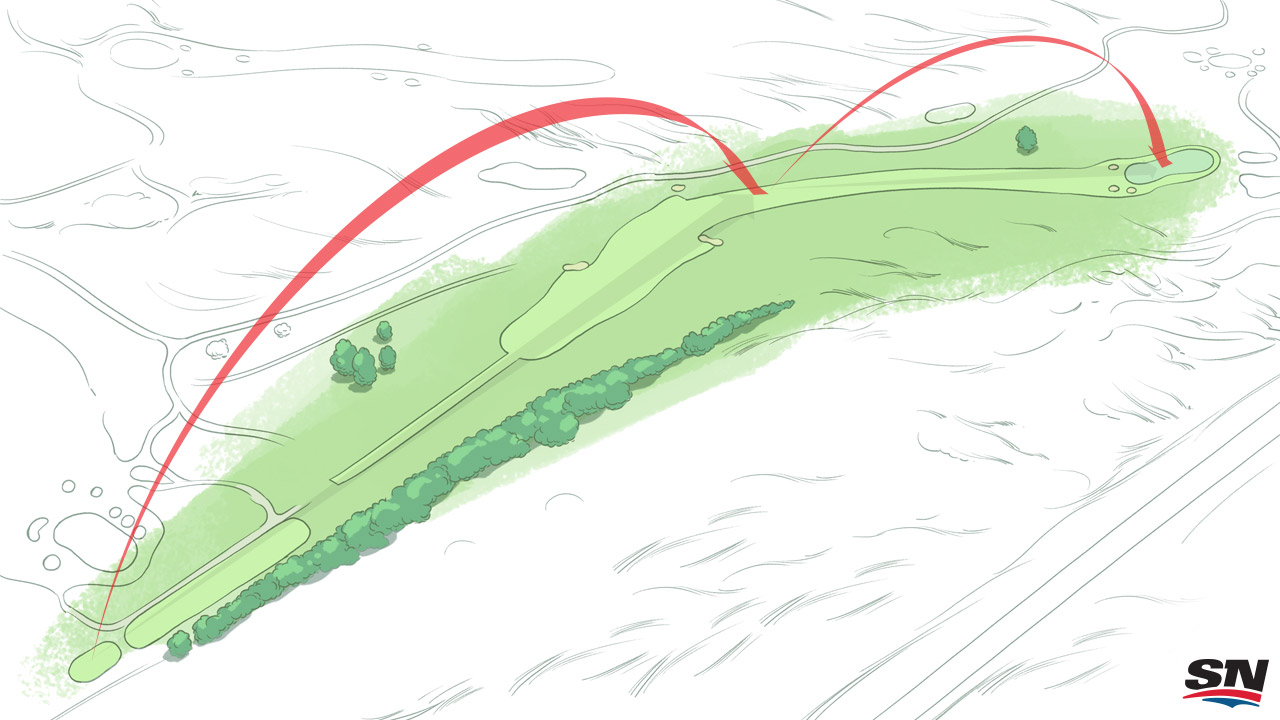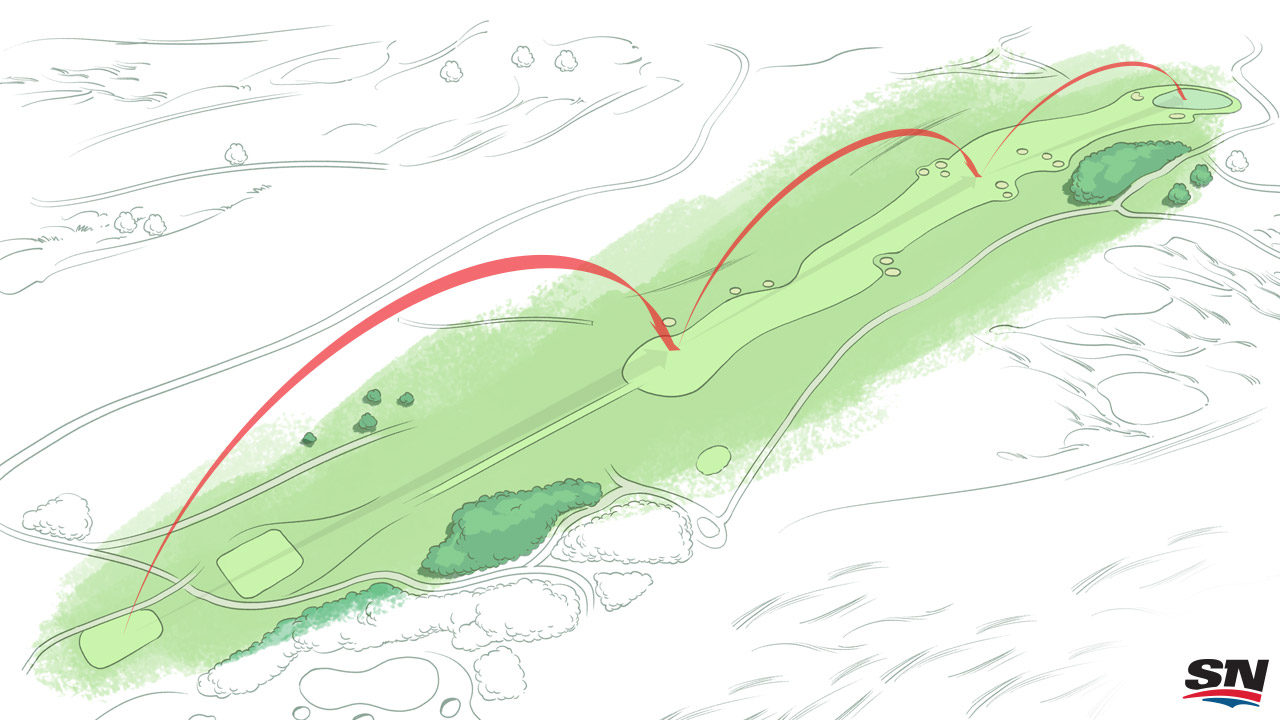• Prepare for wind
• What Palmer, Nicklaus, Watson and Woods learned
• Four holes to watch
The head professional at Royal Birkdale has some advice for players set to tee it up at the 146th Open Championship this week: “Be patient.” And, Brian Hodgkinson adds, be ready for some serious wind.
Hodgkinson, who’s been head pro at the course in North West England since 2002, calls the par-70 track both playable and dangerous. “The simplest holes can cause a problem,” he explains. “It’s a fair course, but you need to hit a lot of good shots.”
And you need to hit those shots in blustery conditions. The last time Royal Birkdale played host to the Open, back in 2008, 50-mph winds forced organizers to move one tee forward 50 yards. Even if the wind is less severe, say 20 mph, players will have to keep their shots low and reduce spin. “You’re having to look to change your game, and that’s when it gets interesting,” Hodgkinson says. “That’s when the guys have got to relish the challenge of doing something a little bit different to what they do week in, week out.
“They should enjoy it. If they don’t get it, they’ll go home after two rounds. That’s what Arnold Palmer learned, that’s what Jack Nicklaus learned, that’s what Tom Watson learned, that’s what Tiger Woods learned. They had to adapt their game so they could actually play in these conditions.”
Sounds like a breeze, right?
Here are four holes Hodgkinson says to keep an eye on for the Open Championship, beginning July 20. All the average scores and hole rankings below are from the 2008 tournament, won by Ireland’s Padraig Harrington with a three-over-par score of 283, four strokes better than second place Ian Poulter. There are two Canadians in the field: Adam Hadwin and Austin Connelly.
[relatedlinks]
No. 1
Par 4, 448 yards
Avg. score: 4.515
Rank: 2

“Great scene-setter, it gives you an idea about what you’ve got to come. It is a tough hole in any conditions — wind against, wind across, wind behind. Doesn’t matter what it is, it will always test you.
“It’s a narrow drive to a well-protected green. You have a green that slopes from front to back, making those opening putts and opening chips just a little bit more difficult to control.
“Ideally, it’s a long iron stroke or fairway wood about 250, 200 yards off the tee… leaving you a mid-line into the green. The difficulty is the prevailing winds off the left-hand side. You’re always trying to protect it a little bit from just drifting off to the right.
“If we have conditions where it’s flat calm, there is an option to take a driver, pitching the ball 270 yards, carrying a mound on the left-hand side back out into the fairway. There’s a reward for it. If you want to hit it 300 yards, that’s fine, but better be straight. If you’re not then you’re going to be punished. It’s risk and reward all the time.
“It’s a toughie to start. Its stroke average, certainly in the last few Opens, has been well over four and a half. If you’re taking a five, it’s not the worst thing in the world. [Laughs]”
No. 6
Par 4, 499 yards
Avg. score: 4.765
Rank: 1

“For the club members, it’s a par 5, but for the Open they make it a par 4. It’s a four-and-a-half at best.
“You’ve got three options from the tee: Lay up in front of the bunker, leaving yourself a shorter second shot, but obscured from the green. Go left of the bunker, lengthening the hole but giving yourself a good look at the green. Carry the bunker.
“From the back tee, that’s about 280 yards. Doable, obviously, if the wind’s favourable. But if you don’t cover it you go into that bunker, and that’s really dropping a shot straight away. There’s a big reward if you carry it — you’ll be knocking an 8-iron or something for your second shot.
“The green is a thin and long, really a par-5 green. It’s quite exposed, so the wind plays havoc with the putting.”
No. 12
Par 3, 183 yards
Avg. score: 3.272
Rank: 8

“The 12th is probably our signature hole. It’s the newest hole on the course, brought in after the 1971 Open. It’s one of those holes that is widely photographed, and it’s Tom Watson’s favourite hole.
“You come from the 11th and you walk between two dunes. You look left and there it is, this little green sat right into the dunes, very scenic. From the tee, it looks as though there’s rough all the way up to the green — it’s not quite like that, but it nearly is. And [there are] grassy banks, full of long grass just waving at you.
“It’s a relatively short hole by modern standards for a par 3. I know it was windy last time: On the third day, it was the third most difficult hole on the course relative to par, so that shows you even though it’s not long it can still be quite tricky.
“When you miss the green and hit the bunkers it’s a very difficult up and down. It’s almost like a dropped shot when you miss the green on that one.”
No. 15
Par 5, 542 yards
Avg. score: 5.089
Rank: 17

“It’s not overly long by modern standards, but it’s always slightly different when you play it — you’ve always got to think about what you’re doing. One mistake leads to another mistake leads to another mistake.
“It’s not a par 5 where you just try and overpower it. If you do that, then you’ll find trouble more often than not. You’ve got to treat it as a dangerous hole, not a hole that’s a birdie hole. Most of the guys think of these par 5s as birdie holes almost as a given. Not quite like that on 15.
“There’s a lot of trouble, there’s a lot of bunkers. When the guys get out of position is when they try and be too greedy with the second shot, trying to force their way back in the hole. Off the tee, it’s very narrow — second shot into a narrow entrance to the green. They can protect the hole by putting the pin in certain positions that are difficult to get to. It’s one of those when you get out of position, drive it in a bunker, put it in the rough, that’s where the problems start.
“I feel it’s a challenge every time I play it, no matter where the wind is, and it’s never quite the same, there’s always something that’s a little bit different about it. if you play that hole well, you can be well pleased with yourself.”
Illustrations by Kagan McLeod


